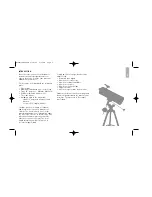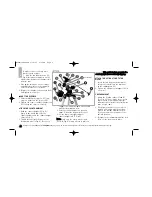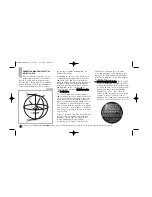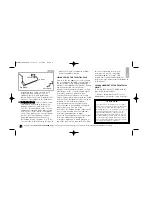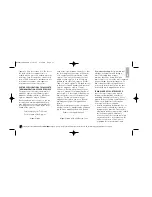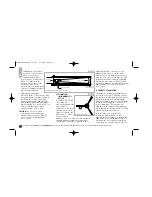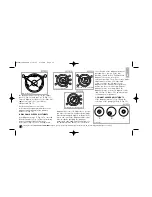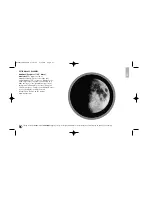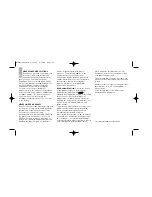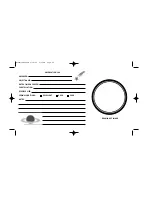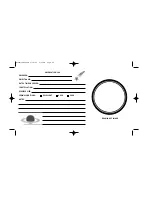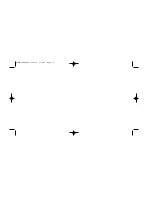
Use a neutral density filter (often called
a “moon filter”) when observing the
Moon. Neutral density filters are
available from Meade as an optional
accessory and enhance contrast to improve
your observation of lunar features.
Spend several nights observing the Moon.
Some nights, the Moon is so bright that it
makes other objects in the sky difficult to
see. These are nights that are excellent for
lunar observation.
Observe the Solar System
: After observing
the Moon, you are ready to step up to the
next level of observation, the planets.
There are four planets that you can easily
observe in your telescope: Venus, Mars,
Jupiter and Saturn.
Nine planets (maybe more!) travel in a fairly
circular pattern around our Sun. Any system
of planets orbiting one or more stars is
called a solar system. Our Sun, by the way,
is a single, yellow dwarf star. It is average as
far as stars go and is a middle aged star.
Beyond the planets are clouds of comets, icy
planetoids and other debris left over from
the birth of our sun. Recently astronomers
have found large objects in this area and
they may increase the number of planets in
our solar system.
The four planets closest to the Sun are rocky
and are called the inner planets. Mercury,
Venus, Earth and Mars comprise the inner
planets. Venus and Mars can be easily seen
in your telescope.
Venus is seen before dawn or after sunset,
because it is close to the Sun. You can
observe Venus going through crescent
phases. But you cannot see any surface
detail on Venus because it has a very thick
atmosphere of gas.
10
STAR CHARTS
S
tar charts and planispheres are useful for a variety of
reasons. In particular, they are a great aid in planning a
night of celestial viewing.
A wide variety of star charts are available in books, in
magazines, on the internet and on CD Roms. Meade
offers star locator software. Contact your local Meade
dealer or Meade’s Customer Service department for
more information.
Astronomy and Sky and Telescope magazines print star
charts each month for up-to-the-minute maps of the
heavens.
When Mars is close to the Earth, you can see
some details on Mars, and sometimes even
Mars’ polar caps. But quite often, Mars is
further away and just appears as a red dot
with some dark lines crisscrossing it.
Jupiter, Saturn, Uranus, Neptune and Pluto
comprise the outer planets. These planets,
except for Pluto, are made mostly of gases
and are sometimes called gas giants. If they
had grown much bigger, they may have
become stars. Pluto is made mostly of ice.
Jupiter is quite interesting to observe. You
can see bands across the face of Jupiter. The
more time you spend observing these bands,
the more details you will be able to see.
Fig. 8
Looking at or near the
Sun
will cause
irreversible
damage to your eye. Do not point this telescope at or near the Sun. Do not look through the telescope as it is moving.
Meade114EQASTR 3/28/07 9:33 AM Page 12



